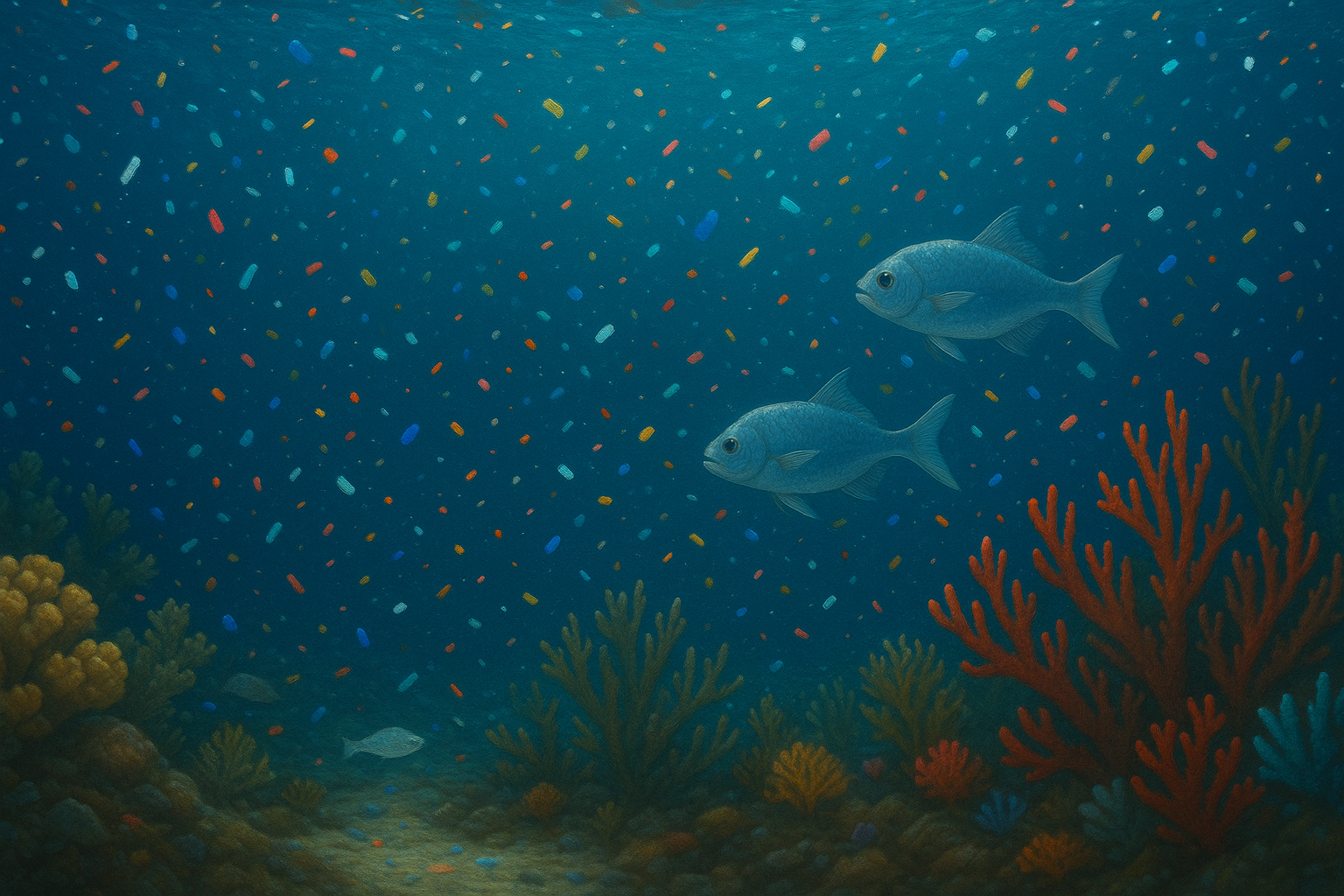How is microplastic formed?
How can we prevent microplastic pollution and how can we clean it up?
Which oceans and water bodies are most endangered?
Are there other areas, such as agricultural fields, that are similarly at risk?
How does microplastic enter the human body? Are there existing studies quantifying the health impacts or fatalities linked to microplastics?
Which animal species are most threatened, and what would their loss mean for our ecosystems and future?
Microplastics are small plastic particles, typically less than five millimeters in size, formed through the breakdown of larger plastic items or manufactured directly as microbeads for use in cosmetics and cleaning products (Jin et al., 2021). These particles increasingly contaminate aquatic environments, where both micro and macro plastics pose serious ecological threats. Bacteria can attach to plastic particles, grow, and form entire colonies, creating a unique micro-ecosystem known as the “plastisphere.” Within these communities, bacteria can exchange genes, including those responsible for antibiotic resistance, turning plastic debris into mobile hubs of microbial activity. Plastic particles also act as vehicles, transporting bacteria across environments via water currents. Marine organisms such as fish and corals are particularly vulnerable to microplastic pollution. Humans are also exposed to microplastics through ingestion (via food and water), inhalation of airborne particles, and potentially skin contact. Research in animal and cell studies suggests microplastics can cause inflammation, oxidative stress, DNA damage, and membrane instability (Wasser 3.0, n.d.).
Referencen:
Jin, M., Wang, Y., Song, M., Li, Y., Zhang, W., & Wang, X. (2021). Ecological effects of microplastics on aquatic organisms: A review. Environmental Pollution, 270, 116387. https://doi.org/10.1016/j.envpol.2020.116387
Wasser 3.0. (n.d.). Microplastics. https://wasserdreinull.de/en/knowledge/microplastics/

